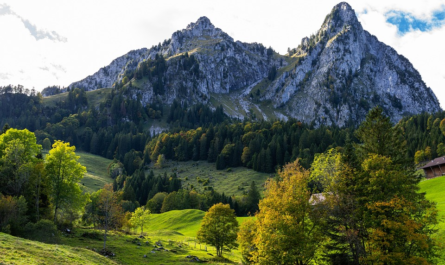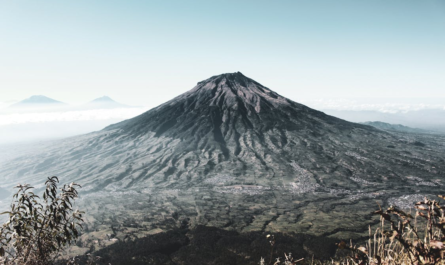Mount Rigi, often referred to special place in Swiss culture. Towering at 1,798 meters above sea level, Rigi is more than just a breathtaking natural wonder. It is deeply rooted in Swiss history, folklore, and traditions. For centuries, locals and visitors alike have been drawn to its majestic slopes, participating in customs that celebrate its beauty and cultural significance. From ancient legends to vibrant festivals, Mount Rigi embodies the spirit of Swiss heritage.
Traditional Swiss Customs and Rigi
Mount Rigi has long been associated with traditional Swiss customs. One of the most cherished traditions is the Alpabzug, the ceremonial descent of cows from alpine pastures to lower valleys as summer ends. Farmers, dressed in traditional Swiss attire, lead their beautifully adorned cattle down the slopes, accompanied by the rhythmic clanging of cowbells. This event, celebrated in various villages around Rigi, is a symbol of Swiss rural life and is often followed by folk music, dance, and feasting on local delicacies such as cheese and dried meats.
Another tradition linked to Mount Rigi is the Jodelfest, or yodeling festival. This unique form of singing, deeply embedded in Swiss heritage, finds a special place on Rigi, where yodelers gather to perform in the open mountain air. The echoes of yodeling across the valleys create a mesmerizing and authentic experience for visitors.
Festivals on Mount Rigi
Several annual festivals celebrate the cultural importance of Mount Rigi. Among them, the Rigi Schwing- und Älplerfest (Rigi Wrestling and Alpine Festival) is one of the most anticipated. This event showcases the traditional Swiss sport of Schwingen (Swiss wrestling), in which competitors, dressed in short leather breeches, engage in friendly yet competitive matches. The festival also features alphorn performances, Swiss flag throwing, and traditional crafts, making it a comprehensive cultural experience.
During the winter season, Rigi hosts the Rigi Snow Festival, a magical event that highlights Swiss winter traditions. Activities such as snowshoe hiking, sledding, and ice carving competitions attract both locals and tourists. The festival captures the essence of Switzerland’s love for winter sports while celebrating the mountain’s pristine beauty.
Another notable event is the Rigi Kulm Sunrise Festival, where visitors hike or take the early morning cogwheel train to the summit to witness the spectacular sunrise over the Swiss Alps. Accompanied by traditional music and breakfast featuring fresh alpine produce, this festival symbolizes new beginnings and the deep connection between Swiss people and their mountainous landscape.
Mount Rigi’s role in Swiss culture extends beyond traditions and folklore; it is a symbol of national pride and a cherished landmark woven into the country’s artistic, literary, and musical heritage. Often referred to as the “Queen of the Mountains,” Rigi has inspired generations of Swiss artists, poets, and musicians, becoming an enduring muse for creative expression.
Renowned painters such as J.M.W. Turner immortalized Rigi’s ethereal beauty in their works, capturing the interplay of light and mist that often shrouds its peaks. Swiss poets, including Conrad Ferdinand Meyer, found inspiration in its breathtaking vistas, weaving the mountain’s grandeur into their verses. Musicians and composers, too, have drawn from Rigi’s dramatic landscapes, crafting melodies that reflect its serene yet powerful presence in Swiss culture.
Beyond its artistic significance, Mount Rigi holds a special place in Switzerland’s cultural and social fabric. Traditional festivals, such as the Alpabzug (cattle descent), celebrate the mountain’s deep-rooted connection to Swiss alpine farming, where cows adorned with bells and floral wreaths descend from summer pastures. Folklore and legends further enrich its legacy, with tales of mystical spirits and hidden treasures adding to its mystique.
Even today, Mount Rigi remains a gathering place for cultural celebrations, outdoor enthusiasts, and those seeking spiritual renewal. Its hiking trails and panoramic viewpoints attract nature lovers, while wellness retreats, such as the historic Rigi Kaltbad Spa, continue to draw visitors in search of relaxation and rejuvenation—echoing the mountain’s reputation as a place of healing since Roman times.
Whether through time-honored traditions, captivating festivals, or enchanting tales, Mount Rigi remains an integral part of Swiss identity, cherished by locals and admired by visitors from around the world. As Switzerland’s first mountain railway, established in 1871, Rigi also holds historical significance, symbolizing the nation’s pioneering spirit in engineering and tourism. Today, it continues to bridge the past and present, offering a timeless connection to Swiss heritage.
Local Tales and Legends of Mount Rigi
Mount Rigi is steeped in folklore and legends that have been passed down for generations. One of the most famous tales is that of the Rigi Maiden, a mysterious spirit said to reside on the mountain. According to legend, she appears to lost travelers, guiding them to safety. Her presence is believed to bring good fortune to those who respect the mountain’s natural beauty.
Another well-known story is the Myth of the Rigi Dragon. Ancient folklore suggests that a mighty dragon once lived in the hidden caves of Rigi, guarding treasures and watching over the valleys. Local villagers believed that the dragon’s presence ensured prosperity and protection from natural disasters. Today, some hiking trails are still named after this legendary creature, keeping the myth alive.
The Enduring Cultural Significance of Mount Rigi
Mount Rigi’s role in Swiss culture extends beyond traditions and folklore; it is a symbol of national pride. The mountain has inspired Swiss artists, poets, and musicians for centuries. Renowned painters such as J.M.W. Turner captured its majestic beauty in their works, while Swiss composers have created melodies reflecting the awe-inspiring landscapes.
Even today, Mount Rigi continues to be a gathering place for cultural celebrations, outdoor enthusiasts, and those seeking spiritual renewal. Whether through time-honored traditions, captivating festivals, or enchanting tales, Mount Rigi remains an integral part of Swiss identity, cherished by locals and admired by visitors from around the world.
Mount Rigi is much more than a scenic Swiss landmark—it is a cultural treasure filled with traditions, festivities, and folklore that have endured through generations. Its breathtaking views, combined with its rich heritage, make it a timeless symbol of Swiss culture. Whether witnessing an Alpabzug procession, participating in a Schwingen match, or listening to ancient legends, experiencing Mount Rigi is a journey through the heart of Switzerland’s vibrant traditions. The mountain also serves as a hub for storytelling, where elders pass down folklore to younger generations, keeping the spirit of the past alive. Additionally, the culinary traditions surrounding Rigi, such as indulging in Swiss fondue or savoring fresh alpine cheese, further enrich the cultural experience. Mount Rigi is not just a place—it is a living testament to Switzerland’s enduring customs and natural splendor, ensuring its legacy continues for generations to come.



